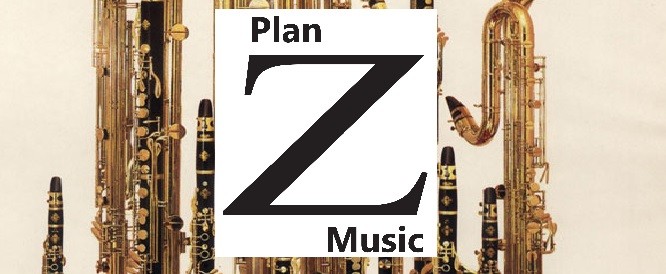A few pages before the lamentable review of my scale books, in the November edition of Music Teacher Magazine, there is an excellent, intelligent article by recorder teacher, Heather Ward. The main thrust of her argument is for the recorder to be regarded as a “developmental” rather than “first-access” instrument. Having seen evidence of the excellent work done by my friend and colleague Phillippa Penkett at her school in Chelmsford, I certainly concur with this.
Heather Ward tells us: Current first access provision in schools may offer children one year’s experience of various instruments: perhaps ukulele, drums, harmonica, ocarina, strings, adapted woodwind or brass… At the end of the first access year, children are generally encouraged to take up orchestral instruments for continued learning. However, maintained schools and local authorities are often unable to make good provision for instrumental teaching. Any take-up is restricted to the few who have parents with the resources to pay for private tuition. Despite the ambitious initiative of first access, instrumental teaching for any but the wealthy is dying out in many primary schools. She goes on to suggest that the recorder can be a suitable alternative for continued learning as it offers a wealth of musical experience, is cheap, easy and can be taught in a whole class context. Perhaps most importantly, she states that, in the classroom, it can be taught with a minimum of expertise.
I feel this brings us to the heart of the matter. With the proliferation of academies and free schools and the decline of local authority control or funding for musical education, instrumental tuition has become worryingly unregulated. The hiring of teachers in schools is generally at the absolute discretion of headteachers and their overriding consideration when making choices is increasingly budgetary. Few heads have any understanding of instrumental teaching – why should they? – and the 2014 report, Inspiring Music for All (funded by the Paul Hamlyn Foundation) found that only 17% of primary teachers feel confident about doing music in their classrooms. The inevitable result of the deficit of understanding combined with the deficit of funding is a deficit in expertise. Pay levels for specialist instrumental teachers in the maintained sector are significantly lower than in private practice and ISM and MU recommendations are routinely ignored; the gulf between their pay and other teachers’ pay is considerable and widening. I have heard much – too much – about the problem of players who don’t know how to teach: the glaring problem is rather of teachers who don’t know how to play.
Every September, as a teacher who only works in secondary schools, I take on new pupils who have received tuition at junior school for two, three or even more years. Rarely beyond Grade 2 standard, and generally no further on than Grade 1, they routinely present serious deficiencies of technique and musicianship. Some of the horrors include: almost complete inability to read music, inappropriate or non-existent embouchure, no concept of pulse, rhythm or fluency in performance, inappropriate choice of left and right fingerings on the clarinet which generally leaves their playing impeded for ever more (more on this elsewhere in this blog). More than 50% have never been introduced to tonguing and, when asked to tongue a scale, either huff or grunt each note. Addressing these problems and putting them right can be very dispiriting for a child who has repeatedly been told “that’s lovely, darling!” for the past two years.
I have long contended that most junior school children do not have the stature or stamina to be able to learn orchestral instruments effectively. The clarinet presents more difficulty than the saxophone as many children struggle to cover tone holes effectively. The industry has responded with a variety of children’s instruments which have limited keywork. One, the Howarth Junior MX Bb Clarinet, developed with Lambeth Music Service for the Musitrax whole class ensemble teaching programme, appears to have a range of about a dozen notes and is barely sufficient for the demands of Grade 1. It costs £220 including VAT (the assisted purchase scheme, administered by local authorities means that you can purchase the instrument minus VAT for your child’s educational purposes. Academies and free schools can now also benefit from this scheme, but one academy I know charges a £25 handling fee). The next step up, the Howarth Junior PLUS+ Bb Clarinet, another limited keywork instrument which is barely adequate for Grade 3 (only one B and one C# key, both in the same hand: bang goes D major), will set you back a further £260 including VAT. These instruments are really designed to be bought by departments and authorities and loaned to pupils – fat chance for most of us with current funding levels. The Trevor James Alphasax alto saxophone, with no bottom Bb or B, nothing above top D and no side keys for F# and C in chromatic scales, comes in at an eye-watering £399 (I teach the full range and use of all alternative fingerings before Grade 3). Junior schools in my area are persuading parents to fork out these sums to buy these instruments for their children.
Surely, a more effective programme for music in education would involve singing, including learning to read music and sight-sing, recorder playing, basic keyboard skills, rhythmic training with group percussion work. A combination of imaginative (and appropriately trained) teaching and suitable resources would give children a sound basis on which to develop as instrumentalists when the time comes and will keep them engaged by giving them a tangible sense of achievement. Some instruments such as strings need to be started at an earlier age and a minority of children will be ready to play wind instruments below the age of 11, but this this should be provided on the basis of need, outside the classroom, in one-to-one lessons.
My secondary school beginners generally quite quickly overtake those who have learned at junior school; it is as well that they do since much of the early learning material is aimed at rather younger children and they find it rather patronising. There is a running joke amongst some of my teenage students about adults who want to “get down wiv da kidz”. One student mocked up a cover for my scale books, with the title: “Fun Wiv Scalez and Arpeggioz for Kidz!” and a cartoon of a child on a skateboard, baseball cap on backwards, brandishing a clarinet. When they are ready, students are prepared to take learning seriously provided we take them seriously.



